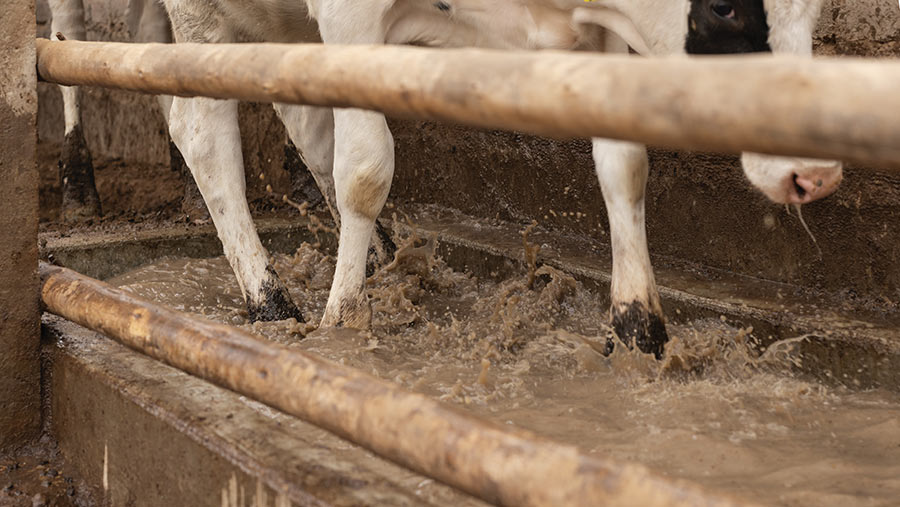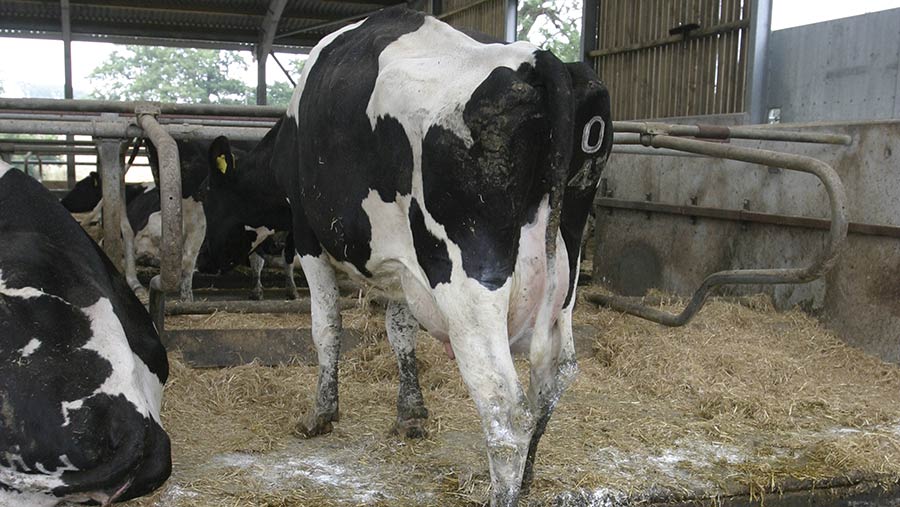Why regular foot-bathing strategies need to change
 © C Guillermo Spelucin/Adobe Stock
© C Guillermo Spelucin/Adobe Stock Routine foot-bathing should be part of a farm strategy for digital dermatitis, rather than viewed as the cure.
Dr Laura Solano of Lactanet, Canada’s largest milk organisation, says dairy farmers can operate more effectively by establishing a farm-specific programme based on regularly monitoring lesions, improving housing hygiene and preventing infection in heifers.
This will help select cows for early and topical treatment and control outbreaks of digital dermatitis (DD), reducing the need for foot-bathing.
“It is not used to treat active lesions, it is there to control and prevent chronic cases from becoming active,” she says.
See also: Top tips to limit digital dermatitis in heifers
Laura argues that evidence for foot-bathing’s effectiveness is weak, and surveying 22 years of foot-bath research, she found 57% of papers were about evaluating products and protocols, mostly copper sulphate efficacy.
Only three projects looked at biodegradable treatment products.
However, she thinks the dairy industry needs to start focusing on them because of issues relating to treatment products and protocols involving people on farm, and the sustainability of routine foot-bathing.
“The key to foot-bath management is consistency, but we need to reduce foot-baths by improving cow hygiene and biosecurity – we will be forced to do it in 10-15 years.
“Foot-bathe twice a week, lower product concentration and stay on top of monitoring,” she says, adding that it is better to foot-bathe the group 60-90 days before the lactation stage, where DD is affecting most animals.
Regular inspection
Breeding for genetic resistance and vaccination are still in development, bulk milk testing is accurate but unable to differentiate between active or chronic infection, and sorting cows for treatment after milking using camera technology is expensive.
Therefore, Laura says that keeping track of herd infection involves checking lesions.
She uses a mirror stuck to a kitchen spatula to view cows’ feet in the parlour, during foot-trimming or walking through cubicles.
Regularly inspecting feet will spot new lesions, and cow records will show trends for recurring cases, giving an early warning of outbreaks, as well as assessing treatment progress.

© A Linscott/Adobe Stock
Slurry management
As poor leg cleanliness is associated with higher DD prevalence, Laura says improving hygiene on farm is more important than relying on foot-bathing as a treatment.
Scraping slurry fewer than eight times a day leads to more infection, as does moving manure from cows to heifers.
“We don’t know the ideal number of scrapes a day. But new builds need to bear this in mind. Cows shouldn’t have to do more than one stride to get out of a wave of slurry,” she says.
Hosing feet in the parlour keeps them clean, as does more bedding, and creating a dry environment.
Laura also points out there is a move to help skin integrity in heifers through nutrition, to protect them from initial infection.
One DD-free herd she visited had installed a platform the full length of the feed fence to ensure cows were not standing in the slurry passage while eating.
The rubber-covered platform sloped into the passage and had dividers to position the cows straight, ensuring they dunged into the alleyway.
Laura Solano was speaking at the Total Dairy conference (6-7 November, Stratford-upon-Avon).
